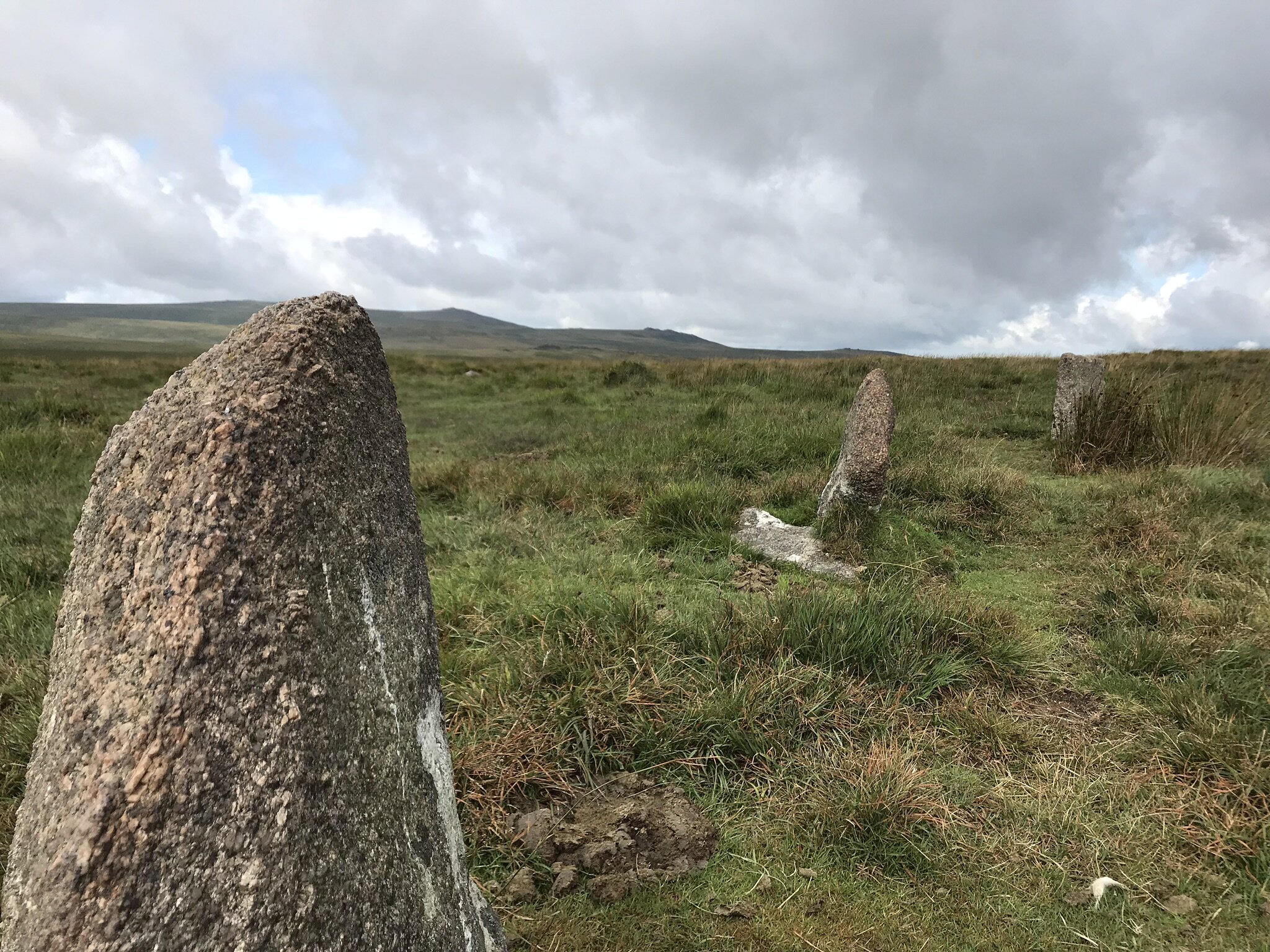by Colin Burbidge
From the pages of the “Western Times” 21st, 25th & 26th June 1912
A little over 5 to 6 miles west of Murchington, in the late spring of 1912, a new village was taking shape. You would find it, between Oxhead Ridge and Hanging Stone Hill, and close to Teignhead, a wild and remote part of Dartmoor. It had a number of cottages, a church with a 30-foot spire, a public house, a windmill complete with 20ft wheel, and a hospital. The pub is called “The Cows Head”. The pub sign was attributed to be the work of a Corporal Wheeler. The Village has a number of cut-out residents, including one lady dummy in skirt and blouse with a hat trimmed with red and green ribbon.
Looking south from Gartaven Ford, Dartmoor: the village with no name was slightly west of here on the bleak northern moor
The village which has no name is the product of 2 months hard work by officers and men of Okehampton Artillery Camp, and its sole purpose is to provide men of the 37th Howitzer Brigade with realistic targets, and about half a day’s firing to destroy the work of 2 months. The guns will be located at Culliver Steps near Belstone and the range to the mystery village is about 6000 yards. From Higher Tor an indistinct view of the village could be had. It looked like a patch of white, black, and brown on the side of Oxhead Ridge covering some 4 to 5 acres. The clever design of these properties made from timber frames and clad with painted canvas, is that they are collapsible.
At the appointed time teams of soldiers would haul on steel guy wires, raising the buildings to the perpendicular, and thus they become three dimensional. When the Artillery attack starts teams of signallers using flags, morse and telephone will observe and relay the accuracy of shelling back to the gunners at Belstone. As in war conditions the gunners will be forbidden to shell the hospital, thus making extra demands on their gun laying accuracy. Originally the destruction of the village was due on June 20th, however bad weather, with gales and heavy rain has forced to postponement of the attack.
On June 26th Lieut. Phillips of the Commandants office said it was impossible to say when the action might take place. Strong winds and heavy rain continued the delay, until the first week in July, when the attack finally took place. A number of long-range photographs were taken of the bombardment and formed a 2-page spread in the Illustrated London News issue dated July 6th, 1912. The picture below is of the dummy church being shelled.
© Illustrated London News Ltd. / Mary Evans




